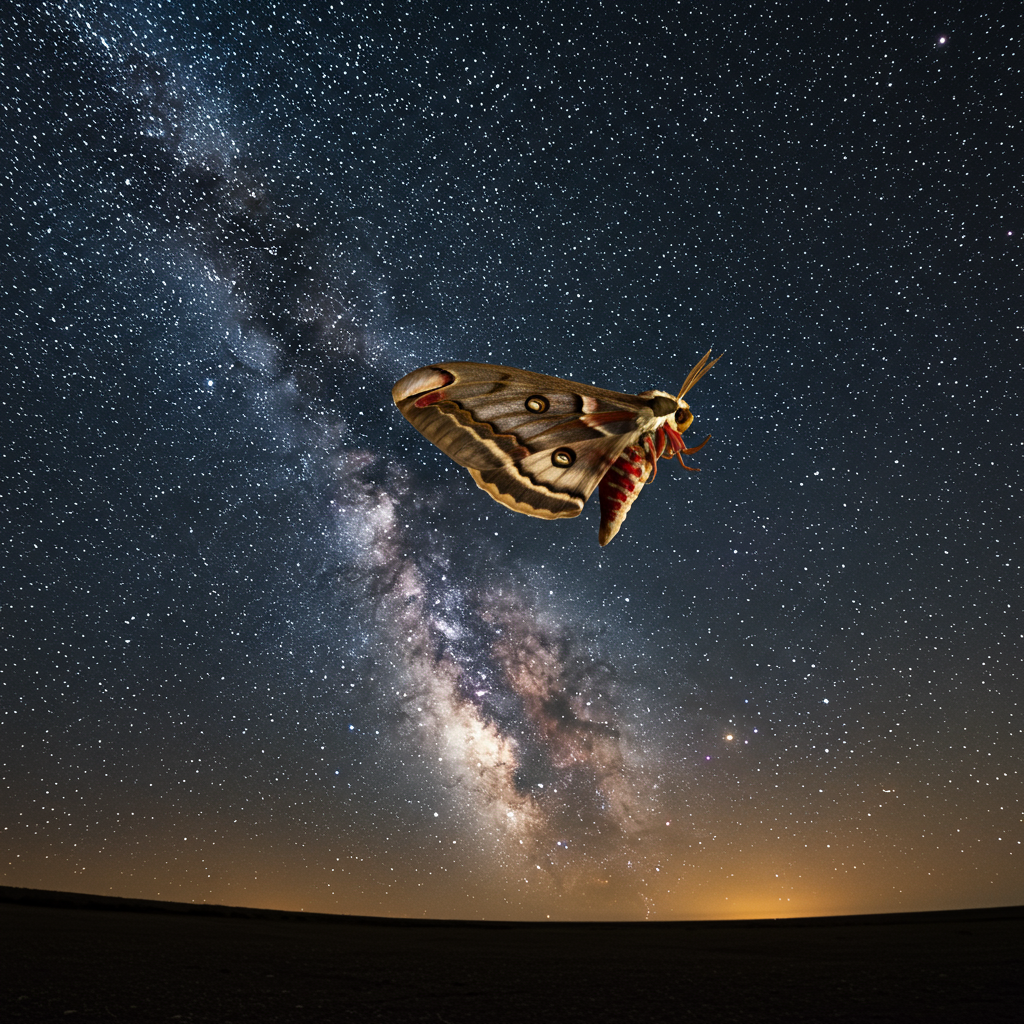Bogong moths undertake one of nature’s most remarkable migrations, flying vast distances across Australia. Now, new research reveals an astonishing secret behind their epic journey: these tiny insects use the stars as a celestial compass.
Published in the prestigious journal Nature, this groundbreaking discovery marks the first time an invertebrate – a creature without a backbone – has been found to navigate long distances using the night sky.
The Epic Journey of the Bogong Moth
Every year, as temperatures soar, millions of nocturnal Bogong moths (Agrotis infusa) embark on an incredible migratory flight. Seeking cooler refuge, they travel roughly 1,000 kilometers (about 620 miles) south from warmer regions like Queensland and New South Wales. Their destination? Cool, sheltered caves high in the Australian Alps. Later in the season, the surviving moths navigate the complex return journey to their home areas to breed before completing their life cycle.
A long-standing mystery has been how these moths, often flying to destinations they’ve never previously visited, manage such precise long-distance navigation. Scientists previously speculated that the moths might rely on Earth’s magnetic field or perhaps visual landmarks for guidance.
Unlocking the Celestial Secret
Given the predictable patterns of stars each night, celestial navigation became a strong possibility. To test this hypothesis, researchers conducted a clever experiment. They placed Bogong moths in a sophisticated flight simulator designed to replicate the night sky above them, while also neutralizing any potential cues from the Earth’s magnetic field.
The moths’ flight paths were meticulously recorded under different simulated sky conditions:
When the simulated stars mirrored the natural night sky orientation, the moths consistently oriented themselves in the correct migratory direction.
However, when the star patterns were randomized, the moths became visibly disoriented, losing their sense of direction.
Further investigation provided a neurological clue: specific brain cells in the moths showed heightened activity in response to particular orientations of the night sky, suggesting a neural mechanism for processing this celestial visual information.
A “Clean, Impressive Demonstration”
The findings provide compelling evidence that these moths possess an internal star compass. Kenneth Lohmann, an animal navigation expert at the University of North Carolina at Chapel Hill (who was not involved in the study), described the research as “a very clean, impressive demonstration that the moths really are using a view of the night sky to guide their movements.”
While it’s now clear that Bogong moths use the stars, researchers are still working to pinpoint the exact celestial features they rely on. Is it the broad, hazy band of the Milky Way, a specific constellation, or perhaps some other pattern invisible to the human eye?
What is understood is that the moths likely combine this stellar compass with other cues, potentially including Earth’s magnetic field, to successfully complete their monumental journey across hundreds of miles.
Tiny Brain, Massive Feat
This ability to navigate by the stars is particularly astonishing considering the Bogong moth’s brain size – it’s smaller than a grain of rice.
“It’s remarkable that an animal with such a tiny brain can actually do this,” stated study author David Dreyer from Lund University in Sweden. This incredible feat places Bogong moths among a select group of animals known for harnessing the cosmos for guidance. Birds have long been known to navigate by stars over vast distances, and even humble dung beetles use the Milky Way to roll their prizes in a straight line.
The discovery adds another fascinating layer to our understanding of animal migration and the complex ways creatures, even those with miniature brains, interact with their environment and the wider universe to find their way. It highlights the hidden navigational wonders occurring in the night sky, guided by some of Earth’s smallest travelers.




